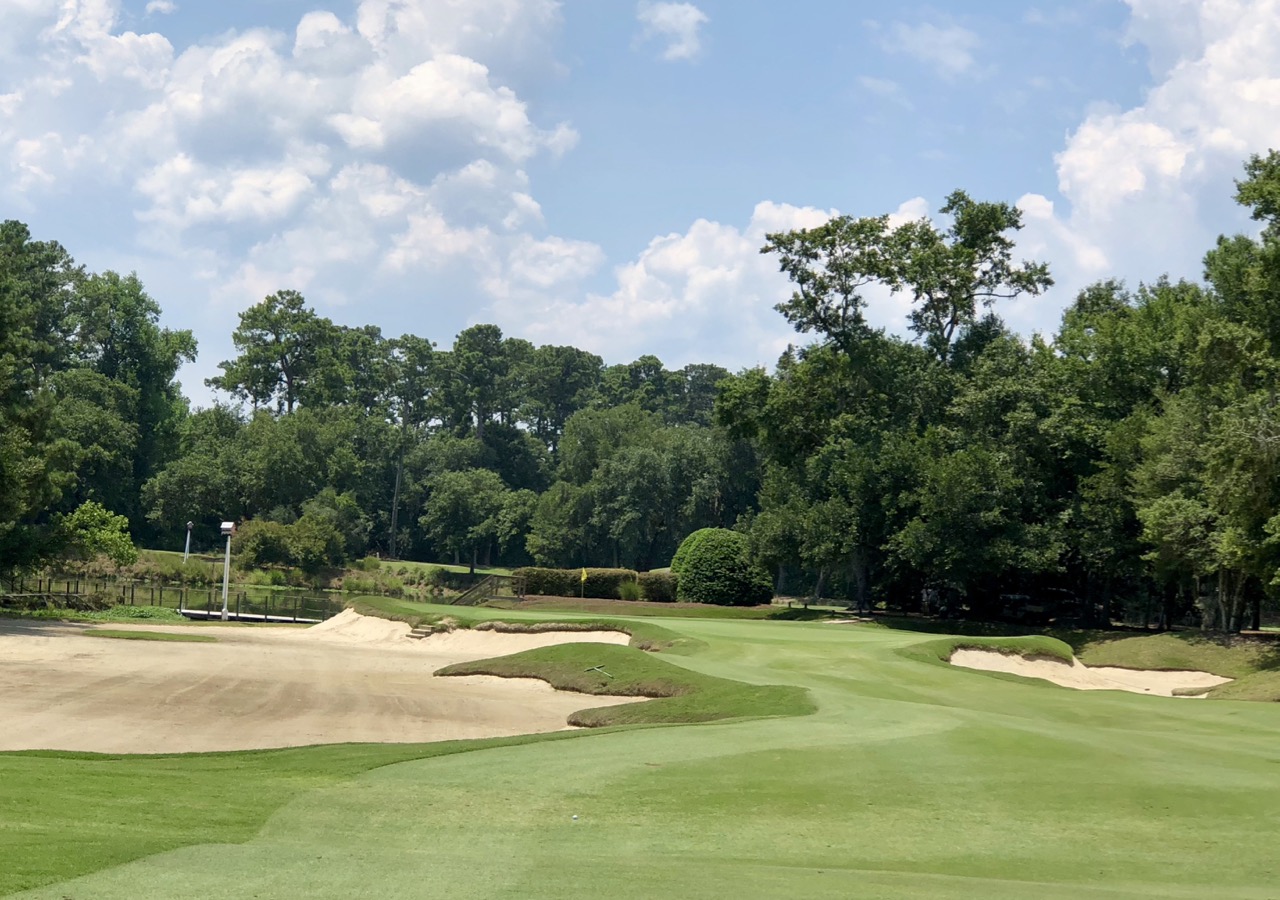The turf on Pawleys Island, SC, golf courses took a beating this winter. Bermuda grass and its variants do not like to sit for more than a few hours under a sheet of ice, but that is precisely what happened during one of the harshest winter seasons in memory. As of the beginning of July, most of the area’s courses were not yet back to normal and, indeed, a few greens looked more suitable for a lunar landing than for putting, with patches of new sod that, unfortunately, had not survived a recent drought. Although the grass on the greens at my own course, Pawleys Plantation, had grown back in, the course superintendent was clearly nervous about the dry days and hot nights. They were as slow in July as at any time in the last 10 years.
As usual, the management at the Mike Strantz-designed Caledonia Golf & Fish Club and, to a similar degree its companion course across the road, True Blue, recovered more quickly thanks to the loving care of its turf managers and a general management willing to spend what it has to in order to justify its green fees which skew toward the higher end of the nearly 100 courses on the Grand Strand of Myrtle Beach. (You get what you pay for...) Caledonia Golf & Fish Club justifies its green fees with great attention to condition, no matter how rough the weather.
Caledonia Golf & Fish Club justifies its green fees with great attention to condition, no matter how rough the weather.
I played Caledonia twice on my July visit, 10 days apart, and was impressed as always at the things that should matter most to golfers –- the ability to stroke a putt that holds its line without bumps and wiggles; and the pleasure of not having to roll your ball over on the course’s well mown fairways. It took some getting used to the greens on my first round after playing the much slower local courses, but I was prepared for the second round at Caledonia, where I played and scored my best in the last two years. But golf, as we know, can be cruel when you stop thinking it is, and I made a common amateur mistake; I believed I was playing so well that I couldn’t make a bad stroke. Indeed, I stood on the 15th tee –- the 6th hole, a par three since we played the nines in reverse order –- thinking that if I birdied that hole and the rest, I would shoot my age of 70 for the first time. I made a good stroke with a seven-iron and wound up 15 feet above the hole. And then the inevitable: I tried to make the downhill putt, knocked it five feet past, got too aggressive coming back uphill and knocked it three feet past, and then missed the comebacker.
I finished with a 75, my only sub-80 round of the year, along with my only four-putt in the last five years. Golf giveth, and golf taketh away, even –- or more accurately, especially -– on the best courses.
Bankrate.com is one of those online services that ranks states by their suitability for retiree living. Within the last week, the organization has published its list of the best and worst states for retirement, including all 50 states, and the results are a bit mystifying, to say the least. Although “weather” is one of the categories Bankrate assesses, few of the states we think of being most retiree friendly for climate do well in the overall rankings.
Bankrate assesses the states based on seven categories, including cost of living, crime, culture, health care quality, taxes, weather and well being. Florida ranks 2nd in terms of its climate but 5th overall. On the other end of the spectrum, New Hampshire ranks a paltry 43rd for weather but comes in at #4 overall based on outstanding marks for crime (the least of any state), health care quality, taxes (no state income tax) and well being. It even ranks highly (#9) in the culture category, which is a bit mystifying. North Carolina gets dinged on culture (40th) and may not get its due in terms of weather (#12). South Carolina (#41) and Georgia (#37) are savaged in the overall rankings, Georgia ranking 49th in the culture category and South Carolina 46th in crime.
South Dakota overcomes its 38th place finish in the weather category with #1 and #2 rankings in well being and taxes, respectively. The well being mark argues that whatever research Bankrate conducted in South Dakota was not done in January. You can see the full results of the Bankrate rankings here.
Almost simultaneous with the publication of the Bankrate rankings, TopRetirements.com published its own list of most popular states for retirement, informed by 750 of its readers. Not surprisingly, those readers listed climate as their top reason for relocation, and chose, in order, Florida, North Carolina, South Carolina, Arizona, Georgia, Nevada, Virginia and Texas as the top 14 retirement destinations. South Dakota, Utah and Idaho did not make the list.
Rankings like Bankrate's should be taken with a huge grain of salt. First of all, when it comes to such categories as crime, culture, health care quality and even cost of living, results will vary significantly across a single state. Savannah, GA, for example, is home to Savannah College of Art & Design, or SCAD, which has helped establish the citiy's art museums and street by street architecture as among the most impressive in the nation. Charleston, SC's crime rate, according to an FBI report, was 35 percentage points below the national average in 2016. To take the full measure of a place you are targeting for retirement or a vacation home, ignore the rankings and do your own research. Or ask me.
Page 81 of 1023























